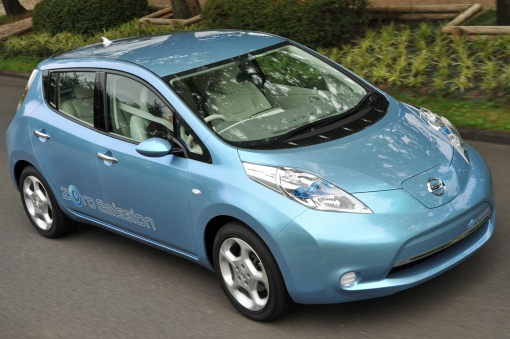 With the announcement of the list price for the Chevy Volt ($41,000 before tax breaks), the time has never been better to constructively talk about the electric infrastructure that will fuel the Volt and the electric cars of the future. The Volt joins other mass-produced electric models that are starting to hit the market, including the Nissan Leaf and the Tesla.
With the announcement of the list price for the Chevy Volt ($41,000 before tax breaks), the time has never been better to constructively talk about the electric infrastructure that will fuel the Volt and the electric cars of the future. The Volt joins other mass-produced electric models that are starting to hit the market, including the Nissan Leaf and the Tesla.
What makes the electric car so tantalizing is that it can run on clean energy, and be responsible for far fewer emissions than traditional gas-powered vehicles. The electricity that we use to power electric cars could come from wind, solar, hydroelectric, or nuclear energy, and never make a substantial contribution to carbon emissions. Even if the electricity comes from coil and gas power plants, it is still more environmentally friendly than combustion engines, because centrally-generated power is more efficient.
While the question of where we will fuel these cars is tantamount, the question all-too-often glossed over is how to best fuel these cars. We can measure fuel efficiency for gas-powered vehicles only by miles per gallon. However, the electric car’s efficiency can be measured not only by how many miles it travels per volt, but also how efficient it is at utilizing the electric grid from which it receives its charge.
The idea for a smart charge has been formally proposed on General Electric’s Ecomagination Challenge, which is a $200 million competition to find the best new ideas on how to create, connect, and use a better electric grid.
“Charging electric cars at night is cheaper and cleaner than during the day because energy demand is lower. But what if you drive more in a day than your battery’s range? Software anticipates when you need power based on your driving habits and manages recharging.”
I encourage all of my readers to both check out the ideas and vote for this particular one because it exemplifies the ideals of the Transit Pass (registration and voting will take approximately 1 minute total).
A number of products already allow consumers and property owners to observe their electricity and other utility usage. However, while these products may help people and institutions lower usage, they do not help advance efficient use. The proposed idea would allow car users to fuel their cars most efficiently.
The software would help car users to fuel their cars at times when energy demand is lowest (typically at certain times at night) as well as how to make the most of mid-day re-charges. This would be a boon both to the consumer as well as our overall energy use and overtaxed grid. By charging when overall electricity demand is lowest, it takes some pressure off the grid during the day and allows electric companies to generate kilowatts on a more consistent basis over time.
This is important not only to the individual electric car owner but also to institutional users such as car-sharing services like Zipcar and fleet owners who could implement electric vehicles such as the postal service and other delivery companies, police departments, taxi services, and other governmental entities.
Companies and drivers would benefit from the device as they could potentially re-charge at a a cheaper price if kilowatt usage is based on time and demand. Likewise, utility providers benefit from insuring that their grid will not be swamped at the worst times of day.
Again, I encourage you all to vote for a great idea. It is a small device that could have a big impact on the success of America’s utilization of electric vehicles, the diminishing demand for foreign oil, and a way of insuring that our fragile electric grid not only stays safe, but potentially improves.

